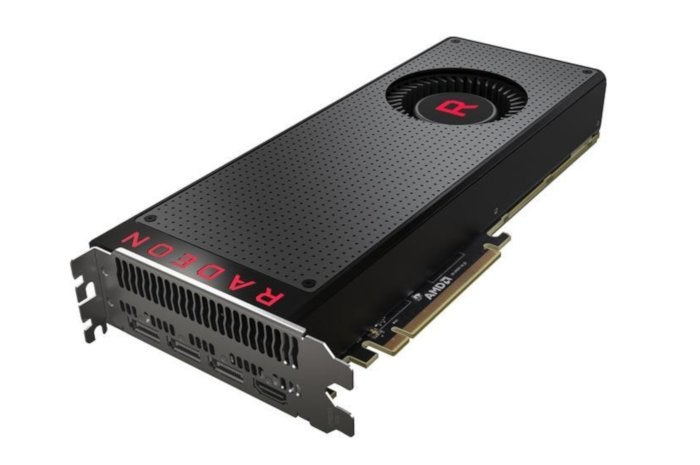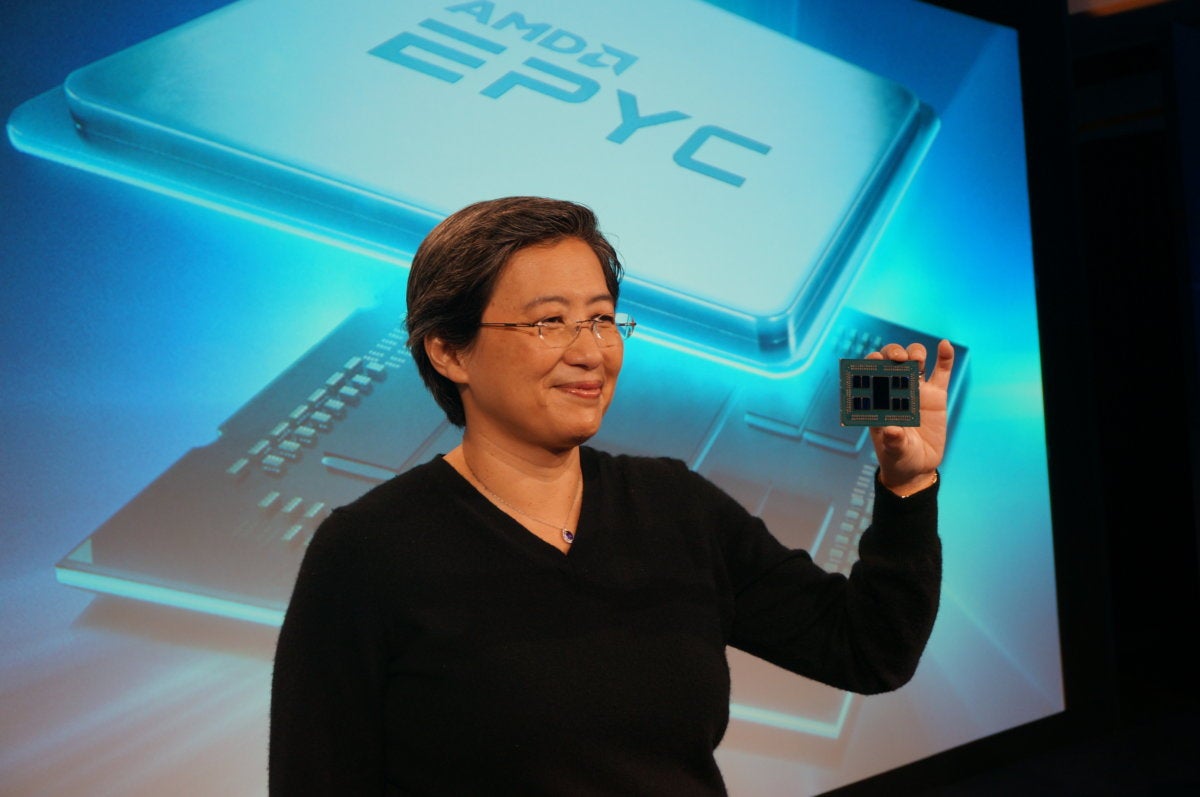On Wednesday, AMD chief executive Lisa Su sat down with a small group of reporters following her CES keynote, in which she formally announced the Radeon VII GPU and the third-generation Ryzen CPU. During our roundtable, Su disclosed that there will be more cores to come with the third-generation Ryzen chip as well as the presence of a ray tracing GPU under development within AMD.
But there were even more details and context from the roundtable—and, well, if you’re as interested as we are in what’s coming down the pike from AMD, you’re going to want to read our full transcript of the event here.
(Note: Like all transcripts, there can be crosstalk and some fumbling about. While we’ve tried to transcribe Su’s remarks verbatim, we’ve more heavily edited the questions from the journalists, where it makes sense. We’ve also used “reporter” to indicate a question asked by any reporter.) And even a 30-minute transcript equates to an enormous block of text, so use our Table of Contents links to jump from highlight to highlight.
Su on Nvidia’s slam and Radeon VII performance
Reporter: [Reads quote from Nvidia’s Jensen Huang on performance of Radeon VII.] Any comment?
Su: What I would say is that we’re very excited about Radeon VII. I would probably suggest that he hasn’t seen it yet. And look, there are 400 million gamers that are using Radeon. We have a pretty big installed base, and when you look at that, much of the conversation you guys have asked me time and time again, what’s the next high-end GPU from AMD? And my view of it is, we had to bring Radeon VII to market; it’s important for our fan base and for high-end gamers. We think it performs very, very well. If you look beyond, at the memory technology and what we have, I think we feel good about it. And I think you guys will see soon enough for yourself.
Reporter: How do you see the Radeon VII’s performance compared to the Nvidia GTX 2080?
Su: We’ve shown some of the data; I think some of the data is on our press release, and I think what you’ll see is very comparable in some games—we win some, we lose some. But the key about the 2080 is, yes, there’s a lot of [feature?] function; ray tracing is important. Radeon VII also does a lot of things across the content-creation workloads; you saw some of our OpenCL numbers that were really, really phenomenal, and we think that it’s very competitive.
Su: We have ray tracing, too
Reporter: Where does AMD stand on ray tracing? Visual quality could supersede the FPS wars.
Su: Well, I think hopefully we spent a lot of time today talking about our vision on gaming, okay, and our vision on gaming is very broad, and we think about on PCs, consoles, cloud, and how we deliver content that’s all those pieces. I think ray tracing is important technology; it’s something that we’re working on as well, from both a hardware/software standpoint. I think the important thing though, and why we’ve talked so much about the development community, is technology for technology’s sake is okay; technology done together with partners, and really getting the development community fully engaged, I think is really important. So you’re going to see a lot more gaming discussions from us as we go through this year, and into the future, and that’s kind of how we do it. We view it as a broad ecosystem, we don’t focus on just the one technology. [inaudible]
Reporter: When Vega first came out, you had two cards...
Su: We had a [Vega] 64, and a Vega 56.
Reporter: Vega faded from the conversation, and now it’s back in the spotlight. How is AMD going to keep it there?
Su: Well, I think the way you should look at it is, you know, again, broadly across the market. So, you know, Vega actually has done really well for us. I mean, you see it in a bunch of different places. You saw it in the discrete graphics cards, we talked about Vega 64 and Vega 56; you saw it in some workstations, certainly coming from Apple; you have seen it in smaller form factors as well. So, you know, Vega architecture is in our notebook graphics and is in the work that we do there. We showed the Google Project Screen that’s using Radeon Pro Vega, you know, as well, and we have other cloud environments where we’ve used Vega. So, you know, as architectures go, they get better with time. You know, it’s like that whole idea of more developers and software optimizations, and Vega has definitely gotten better with time.
 Sapphire
Sapphire
AMD’s Vega 64.
I think, you know, Vega VII, we launched it in the fourth quarter for data center applications and in that form, it’s MI60 and MI50, and that’s going into HBC markets, that’s going into cloud, that’s going into machine learning opportunities, that’s going into virtualization opportunities. So that’s one really important segment for Vega. And then today we talked about Radeon VII for gamers. And I think that just gives you a broad view of the ecosystem.
Reporter: The 7nm Vega was not supposed to be a consumer graphics card.
Su: You said that. I never said that.
Reporter: It wasn’t supposed to be a consumer product in 2018.
Su: What I think we said was, we would do data center first, right? [To PR] That’s what we said, right?
Reporter: You didn’t say anything else after that.
Su: We didn’t say anything else after that. Actually, if I remember correctly, what I said at Computex was, you will see 7nm gaming parts from us and we always planned to bring Radeon VII to the market. That was always in the plan. You know, our goal is, you know, frankly, we want to delight our fans and so we wanted time to get the software optimizations ready and we did quite a bit of that. With every new architecture there are things you do better. We wanted to do the work that we did with Ubisoft and Capcom, you know, on those optimizations and then you know, bring it out when it’s ready.
And gaming also is you know, a high volume market and so we wanted the technology to mature a little bit as well.
Reporter: Last year, you laid out a great presentation with specific product plans through the first half of the year. This year your plans are a lot more fuzzy. Why?
Su: Look, I think what we want to do is make sure the consumers have a good idea of when to expect these products. Radeon VII very quickly, you know, you’ll see it on the shelf in February. I think with the next big things, our third-generation Ryzen, I know there’s a lot of anticipation about that.
The key point is the part looks good. Yeah, the part looks really good and we’ll put it out sometime in the middle of the year. We haven’t decided the exact month yet. You know, there’s a little bit more tuning to be done; we want to get the clocks in the right place. We want to get, you know, all the performance in the right place. But it looks good. And you’ll see it in the middle of the year. And similarly, the next-generation Epyc is very much in development. And you know, we think things look really good there. Look, you see us all the time! You’ll get more information soon.
Reporter: Any comment on Threadripper?
Su: Well, content creators are important to us. And Threadripper has done really well. Actually, I’ve been pretty pleased at how second-gen Threadripper has done, when you think about it as a sort of niche type of market, but there are people who want more performance and so as second-generation Threadripper has come into the market, it just looks like more people have adopted [it]. I think the thing is, keeping our infrastructure consistent is important. And you know, we’ll talk more about Threadripper as we go throughout 2019.
Reporter: Nvidia has ray tracing technology. Does AMD?
Su: I’m not going to get into a tit for tat, that’s just not my style. So I’ll tell you that. What I will say is ray tracing is an important technology. It’s one of the important technologies; there are lots of other important technologies and you will hear more about what we’re doing with ray tracing. You know, we certainly have a lot going on, both hardware and software, as we bring up that entire ecosystem.
Read on to find out where AMD is investing in the PC.
